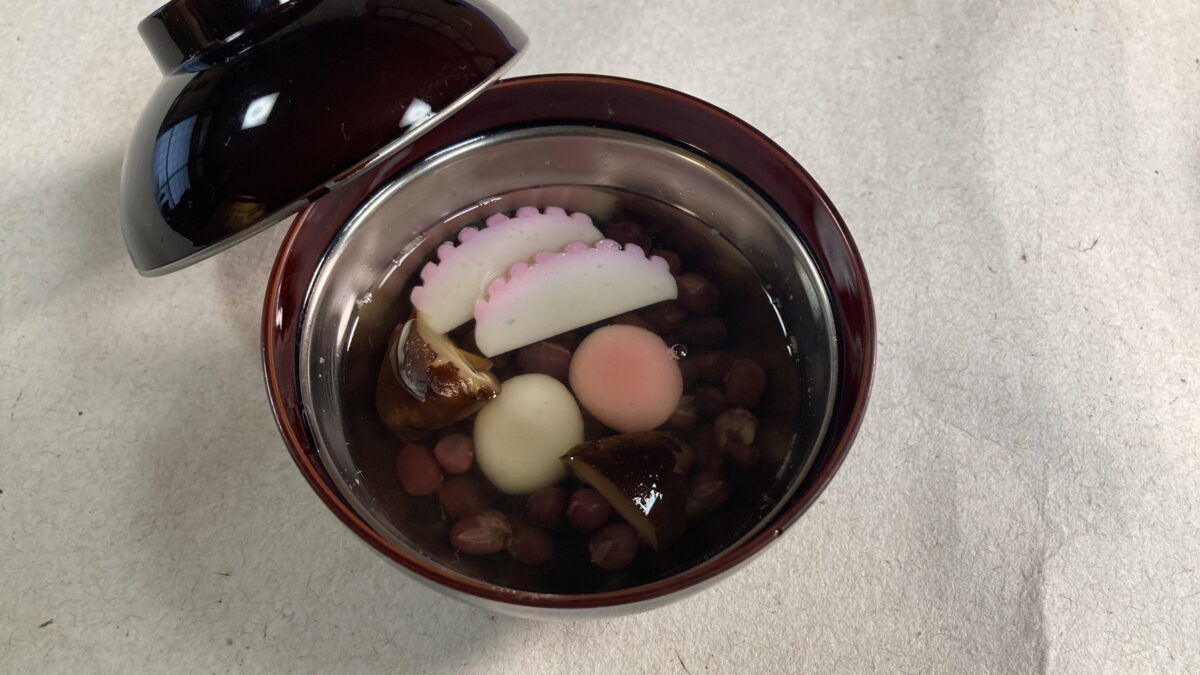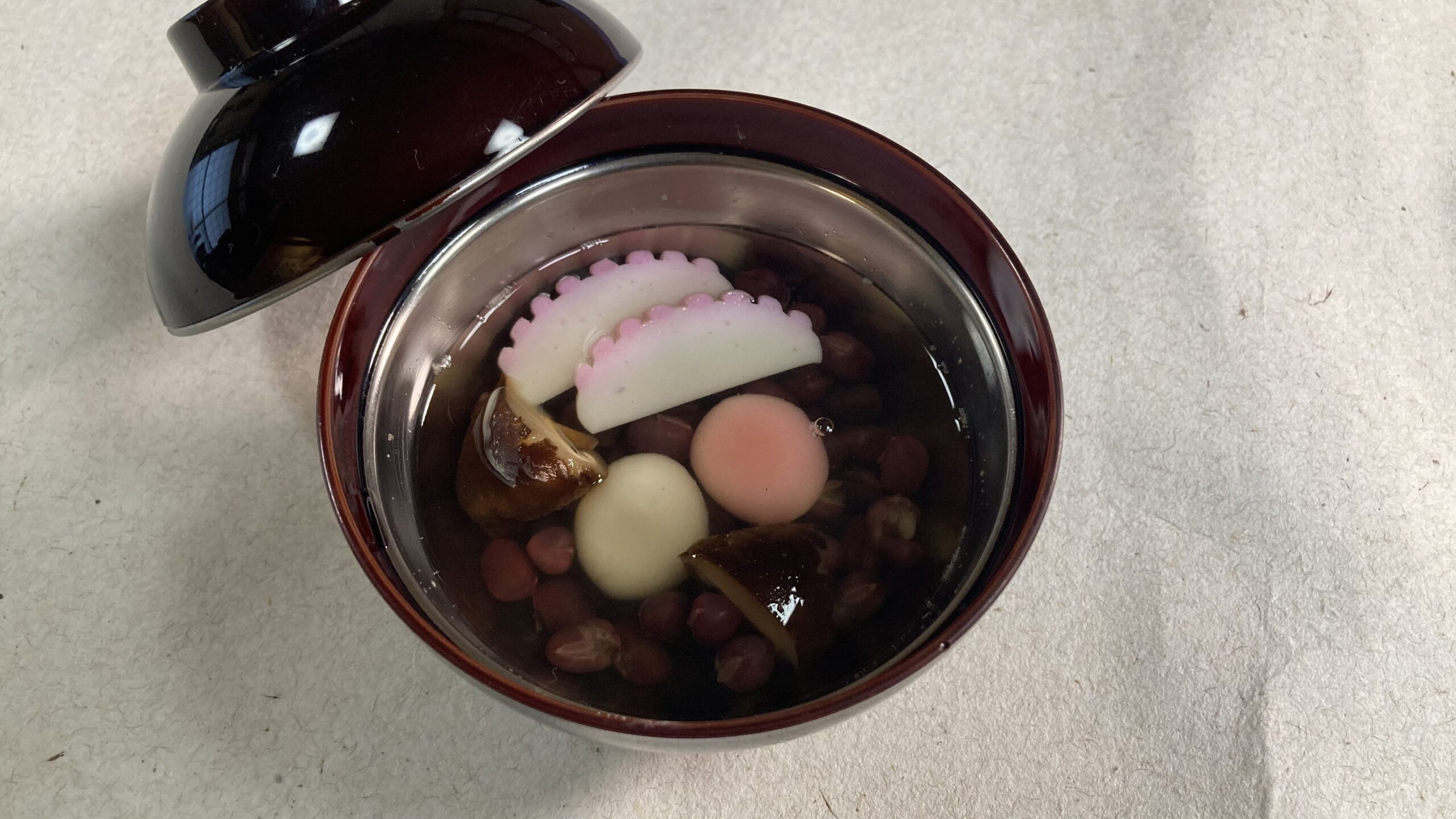
Howdy! Let’s head over to Yamaguchi Prefecture for a sweet and interesting dish called “Itokoni.” Now, this one’s got a bit of a twist because while the basic idea is sweet azuki beans and shiratama dumplings, the way they make it changes depending on where you are in the prefecture. The most famous version is probably the “Hagi-style Itokoni” from the Japan Sea side, like around Hagi City. It’s served cold, almost like a sweet soup! They make a clear broth with kombu (kelp) and season it with sugar, soy sauce, and salt – real elegant, like the old castle town. Then they toss in the azuki beans, shiratama dumplings, shiitake mushrooms, and kamaboko (fish cake). For celebrations, they’ll even color the shiratama red with food coloring, and for more somber occasions, they’ll use plain white or green. Over on the Seto Inland Sea side, they simmer it down until almost all the liquid’s gone, making it nice and sweet. Some areas add veggies, some don’t, and the amount of liquid varies from place to place. Interestingly, there are even regions where they don’t make it for happy events at all! There are similar dishes called “Itokoni” all over Japan, but the folks in Yamaguchi say their name comes from adding the ingredients bit by bit (“oioi,” which can also mean “nephew-nephew”). Another story goes that Lord Mori, a Choshu Domain samurai, used to serve this simple dish to his important retainers twice a year, and in remembrance of his virtues, they called it “Itokuni” (virtue-preserving stew). So, lots of tales about where the name comes from!
Dish Name: Itokoni
- Region / Location: Yamaguchi Prefecture (entire prefecture, especially Hagi and other Kitaura regions, and the Seto Inland Sea side)
- Primary Area of Tradition: Varies by style, with Hagi-style being well-known
- Main Ingredients: Azuki beans, shiratama flour (for dumplings), sugar, salt
How It’s Eaten / Served
The way Itokoni is served really depends on the region. In the Hagi area, it’s often a cold dish with a clear broth made from kombu, seasoned with sugar, soy sauce, and salt. In this broth, you’ll find cooked azuki beans, shiratama dumplings (which can be colored red for celebrations or white/green for other occasions), shiitake mushrooms, and kamaboko (Japanese fish cake). On the Seto Inland Sea side, it’s typically simmered until most of the liquid evaporates, resulting in a sweeter, thicker consistency. The key is the combination of the sweet azuki beans and the chewy shiratama dumplings in a flavorful liquid, served either warm or cold depending on the local tradition.
Cultural Background and Preservation
In Yamaguchi Prefecture, Itokoni has been a traditional dish served at banquets following weddings, funerals, and other gatherings. It’s also commonly made on “Kotohajime no Hi,” which is in December and marks the start of preparations for the New Year. The azuki beans are simmered slowly to keep them intact, and the shiratama dumplings are colored red and white for celebratory occasions and white or green for Buddhist events. The name “Itokoni” itself has a couple of interesting theories. One suggests it comes from the way ingredients are added gradually (“oioi”). Another tale links it to Lord Mori of the Choshu Domain, who served this simple dish to his retainers, and it was later called “Itokuni” (virtue-preserving stew) in his honor. Today, you can still enjoy Itokoni at restaurants and inns in Hagi City, ensuring this local flavor continues to be appreciated.
Additional information:
- Azuki beans: Small, reddish-brown beans with a slightly sweet flavor, commonly used in Japanese desserts.
- Shiratama flour: A type of glutinous rice flour used to make chewy dumplings called shiratama dango.
- Kombu: A type of kelp seaweed used to make dashi, a fundamental broth in Japanese cuisine.
- Dashi: A Japanese soup stock made from ingredients like kombu, bonito flakes, dried shiitake mushrooms, or dried sardines.
- Kamaboko: A type of cured fish surimi (paste) that is formed into loaves and steamed or grilled. It often has decorative patterns.
- Choshu Domain: A feudal domain in Japan during the Edo period, located in present-day Yamaguchi Prefecture.
- Kotohajime no Hi: A day in December that marks the beginning of preparations for the New Year celebrations.
The information about regional cuisine featured on this website (Piggy's Grandma of Japan) is summarized and adapted from the Ministry of Agriculture, Forestry and Fisheries of Japan (MAFF) website, "Our Regional Cuisines"Additional commentary is provided based on the unique experiences and perspectives of the site's editors.
The copyright for the original content regarding regional cuisine belongs to the Ministry of Agriculture, Forestry and Fisheries of Japan.
The summaries and adaptations published on this site are intended for informational purposes only. Piggy's Grandma of Japan does not guarantee the accuracy or completeness of this information. For the most accurate and complete details, please refer to the original pages on the MAFF website.


